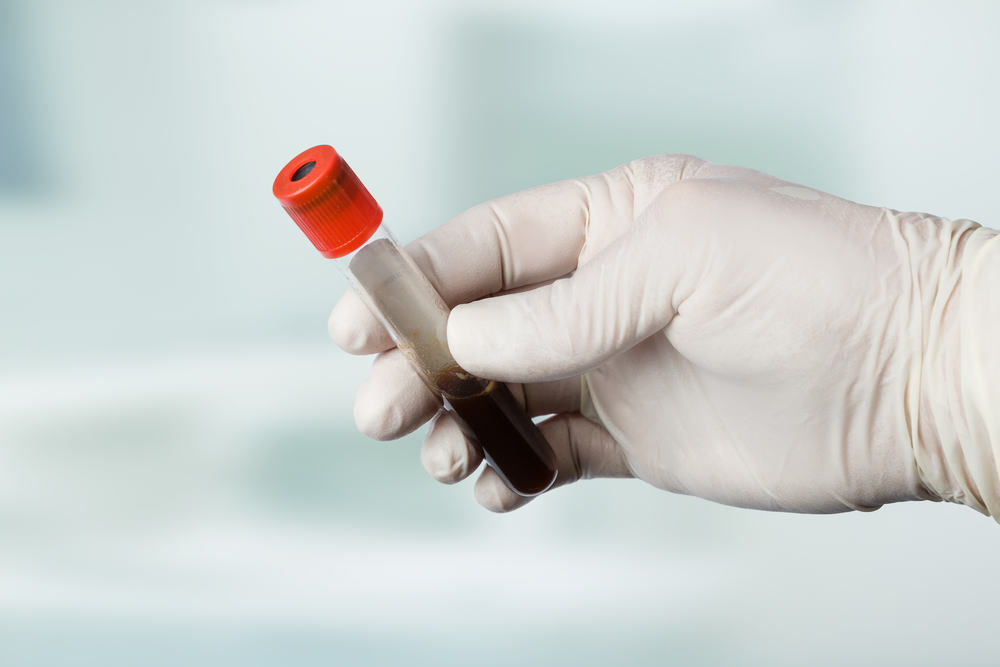Endometrial cancer is a type of cancer that attacks the endometrium or the inner lining of the uterus. This cancer generally occurs in women who have entered menopause (60-70 years). There are two main types of endometrial cancer, namely:
- Type 1 endometrial cancer. The most common type of endometrial cancer. The development of cancer cells in this type occurs slowly (non-aggressive) and can be detected early.
- Type 2 endometrial cancer. The type of endometrial cancer that is more aggressive, so that the development and spread of cancer cells occurs more quickly

Causes of Endometrial Cancer
The exact cause of endometrial cancer is not known. However, an imbalance of the hormones progesterone and estrogen in a woman's body is thought to be one of the causes of endometrial cancer. Lower levels of the hormone progesterone than the hormone estrogen can cause the thickening of the uterine lining. If the thickening continues, cancer cells can grow over time.
In addition, there are several factors that can increase the risk of endometrial cancer in women. Among others are:
- Obesity.
- Has entered menopause.
- Entering the menstrual period at an early age (50 years).
- Never been pregnant.
- Undergoing tamoxifen hormone therapy, for breast cancer patients.
- Suffering syndrome hereditary nonpolyposis colorectal cancer (HNPCC).
Symptoms of Endometrial Cancer
The most common symptom of endometrial cancer is vaginal bleeding. These symptoms usually have appeared since the early stages of cancer. However, bleeding has different signs depending on whether the patient has gone through menopause or not. If the patient is not menopausal, vaginal bleeding is characterized by:
- Blood that comes out during menstruation is more and the menstrual period is longer (more than 7 days).
- Blood spots appear outside the menstrual period.
- Menstrual cycles occur every 21 days or sooner.
- Bleeding occurs before or after sexual intercourse.
For patients who have entered menopause, any form of vaginal bleeding or spotting that appears for at least a year since menopause is considered abnormal and should be checked by a doctor immediately.
Apart from bleeding, other symptoms of endometrial cancer are:
- Watery discharge and occurs after entering menopause.
- Pelvic or lower abdominal pain.
- Pain during sexual intercourse.
Endometrial cancer that has entered an advanced stage will cause additional symptoms, such as back pain, nausea, and loss of appetite.
Endometrial Cancer Diagnosis
Doctors can suspect a patient has endometrial cancer if there are symptoms, which are confirmed by a physical examination. However, to be more certain, it is necessary to carry out further tests. Several types of examinations are usually carried out by doctors to diagnose endometrial cancer, namely:
- Pelvic examination (pelvis). During a pelvic exam, the doctor will examine the outside of the vagina, then insert two fingers into the vagina. Simultaneously, the doctor will press the patient's abdomen with the other hand to detect abnormalities in the uterus and ovaries. Doctors can also use a speculum to look for abnormalities in the vagina and cervix
- Transvaginal ultrasound. This examination is carried out using a special tool called transducer that enters through the vagina, which can transmit high-frequency sound waves into the uterus. This tool can produce a recorded image of the uterus, so the doctor can see the texture and thickness of the endometrium.
- Hysteroscopy. Examination using a hysteroscope, which is a special instrument with a small camera and light, which is inserted into the uterus through the vagina. This tool allows the doctor to see the endometrium and conditions in the uterus.
- endometrial biopsy, namely the procedure of taking a sample of uterine lining tissue for analysis in the laboratory to detect the presence of cancer cells.
- Dilation and curettage (dilation and curettage), or what is known as a curette, which is a procedure for scraping or scraping tissue from inside the uterus using a special tool. This procedure is done if the sample taken through an endometrial biopsy is not sufficient to detect cancer cells or the doctor still doubts the results of the analysis.
If the doctor suspects that endometrial cancer is at an advanced stage, the doctor will perform imaging tests to detect whether the cancer has spread to other organs, including X-rays, CT scans, PET scans, and MRIs. In addition, the doctor may also perform a cystoscopy or colonoscopy to detect if cancer cells have spread to the bladder or digestive tract.
Next, the doctor will determine the stage of endometrial cancer based on the level of spread. There are four stages of endometrial cancer, namely:
- Stage I – Cancer is still in the womb.
- Stage II - Cancer has spread to the cervix.
- Stage III The cancer has spread beyond the uterus (pelvic lymph nodes), but has not yet reached the colon or bladder.
- Stage IV Cancer has spread to the bladder, colon, even to other organs or parts of the body.
Endometrial Cancer Treatment
Endometrial cancer treatment steps are generally determined based on several factors, namely:
- Stage or level of spread of cancer cells in the uterus.
- The patient's overall health condition.
- Endometrial cancer type and tumor size.
- Location of endometrial cancer.
There are several types of endometrial cancer treatment. Among others are :
- Operation. Surgery is one of the most effective treatment measures in treating endometrial cancer. Surgery will be performed if the cancer is still at an early stage. There are two types of operations that can be performed, namely:
- hysterectomy, the procedure for removing the uterus. However, this operation caused the patient to be unable to have children in the future.
- Salpingo-oophorectomy, is a procedure to remove the ovaries and fallopian tubes. This type of surgery also prevents the patient from having children in the future.
- Chemotherapy. Treatment methods using drugs that can kill cancer cells and prevent their spread. The type of drug used is cisplatin, carboplatin, doxorubicin, and paclitaxel.
- Radiation therapy (radiotherapy). A cancer treatment method using high energy beams to destroy cancer cells. Radiotherapy is usually combined with other treatment methods, such as chemotherapy. This treatment therapy can also be used to inhibit the spread of cancer cells when surgery is not possible. There are two types of radiotherapy, namely:
- external radiotherapy, radiation therapy using a machine that directs energy beams to parts of the body affected by cancer cells.
- Internal radiotherapy (brachytherapy), radiation therapy by placing radioactive material in the vagina.
- Hormone therapy. This therapy involves the use of drugs that can affect hormone levels in the body. Hormone therapy is performed on patients with advanced endometrial cancer and the cancer cells have spread beyond the uterus. There are two types of hormone therapy, namely:
- Increase in the hormone progesterone to inhibit the development of cancer cells, for example with progestins.
- Decrease in the hormone estrogen to destroy cancer cells that depend on estrogen to thrive, for example with tamoxifen.
Endometrial Cancer Prevention
Most endometrial cancers cannot be prevented, but there are things you can do to lower the risk. Among others are:
- Perform routine reproductive organ checks, such as pelvic examination and PAP smear. This examination can help the doctor detect any disturbances or other abnormal signs.
- Consider using birth control pills. Using oral contraceptives for at least 1 year, can reduce the risk of endometrial cancer. However, every oral contraceptive has side effects. Discuss the benefits and risks with your doctor before using it.
- Maintain or maintain ideal body weight, because obesity can increase the risk of endometrial cancer. Eat foods that are low in calories and saturated fat.
- Exercise regularly. Try to exercise for 30 minutes every day.
- Discuss the risks and benefits of hormone therapy after menopause. The use of hormone therapy, especially a combination of progestin and estrogen, can increase the risk of breast cancer.
Complications of Endometrial Cancer
Complications that may occur due to endometrial cancer include:
- Anemia, which is caused by vaginal bleeding.
- A tear (perforation) in the uterus, which may appear during an endometrial biopsy or curettage.
- Side effects of chemotherapy and radiotherapy, such as nausea and vomiting, loss of appetite, constipation, hair loss, and rash.









